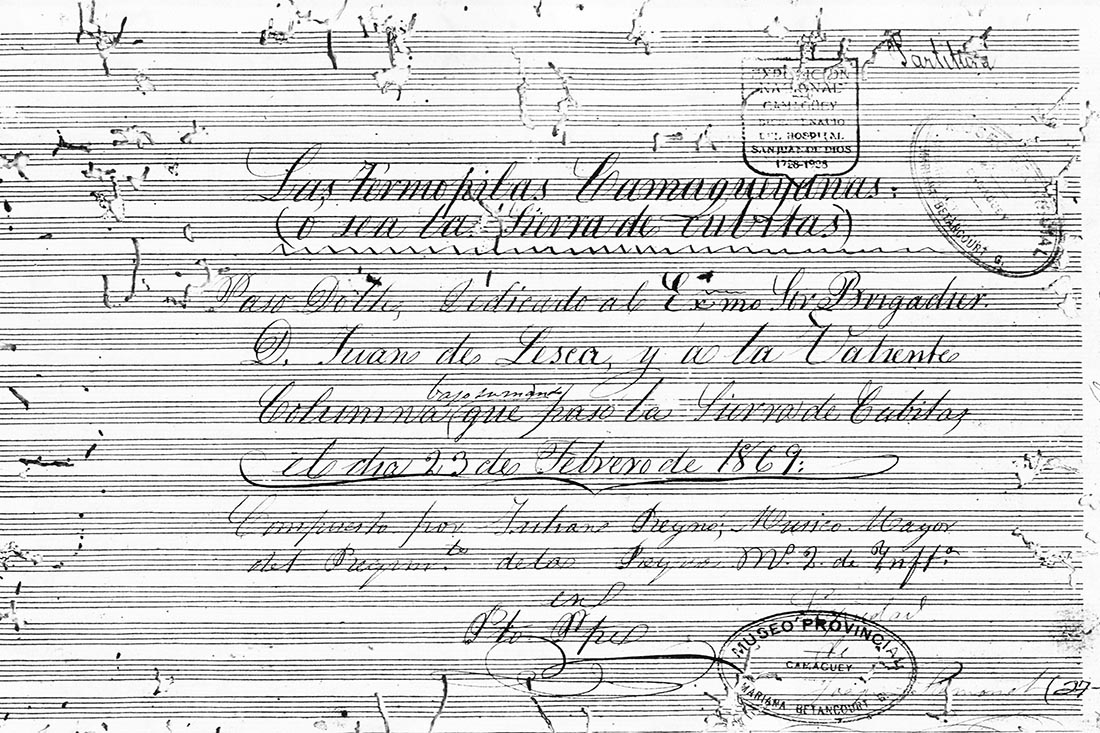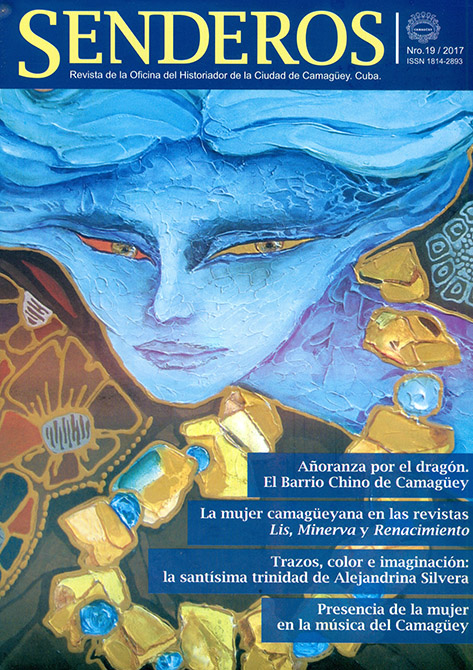By: Verónica Fernández Díaz
Due to the early conspiratorial activities in the old city of Puerto Príncipe, the colonial power decides to strengthen its security from the beginning of the 19th century. For this reason, several regimental forces arrived that also formed music bands. Among them, the band of the Cuban regiment that, according to the historian Juan Torres Lasquetti, was created in 1780 and was replaced by the León Regiment that arrived in Puerto Príncipe in April 1827. This band of the León Regiment was integrated into its majority by Creoles, and began a brilliant era in the celebrations of San Juan and San Pedro.
From the second half of the century the band of the Queen’s Regiment appeared, whose main musician was Mr. José Ruiz in 1865 and Francisco Matos Mondéjar between 1868 and 1886. This band also offered serenades, such as the one performed in 1864 at the graduation of the lieutenant colonel Don José María Velasco, who was later second in command of said body.
Another of the musicians who led this band was the Spaniard Julián Reinó, who during his stay in Puerto Príncipe left some musical compositions still preserved in the documentary collection of the Ignacio Agramonte Provincial Museum. I am referring to the paso doble titled Las termópilas camagüeyanas, which defends the actions in which the Spaniards beat the Mambi forces; hence its dedication to Brigadier Juan de Lesca and to “the brave column that crossed the Sierra de Cubitas on February 23rd, 1869”, according to the score.
Despite this, nineteenth-century music bands have elements of cultural identity that are interesting today. One of special interest is the presence of women as music composers for the format, an aspect noted by Antonio Bachiller y Morales on his visit to Puerto Príncipe in 1838 when he comments: “If the traveler wants to hear military music in the dark, he can go to at eight o’clock at night […] to the Main Square […] One should attract attention: some of the pieces performed by military music are composed by a young lady. I had the pleasure of hearing her play and I also gave her a well-deserved applause”.
Unfortunately, he did not say the name of this woman and there are no references to it in other documents related to the regimental bands kept in local archives. However, it is a fact of undoubted value.
The common denominator of these regimental bands was that they functioned as a music academy, since they offered musical education -both that referred to learning the instrument: positions, techniques, works, as well as theoretical-musical subjects useful for understanding what was played- and their main activity was the retreats offered then in the Main Square, today Agramonte Park, with a varied repertoire that included parts of operas, zarzuelas, traditional music genres such as pasodobles, waltzes, mazurcas, danzones, habaneras, caprices and the concert music that was more popular.
The information contained in newspapers of the time such as El Popular, belonging to the Santa Cecilia Popular Society and other documents, reveals that these regimental bands were multifunctional institutions, since they were used to accompany religious processions and other church celebrations.
They also enlivened improvised dances, which, according to what can be seen from reading “Recuerdos de mi viaje a Puerto Príncipe”, by the aforementioned Antonio Bachiller y Morales, were called retreat dances; as well as their participation in serenades and during common bullfights in that century.
Translated by: Aileen Álvarez García






